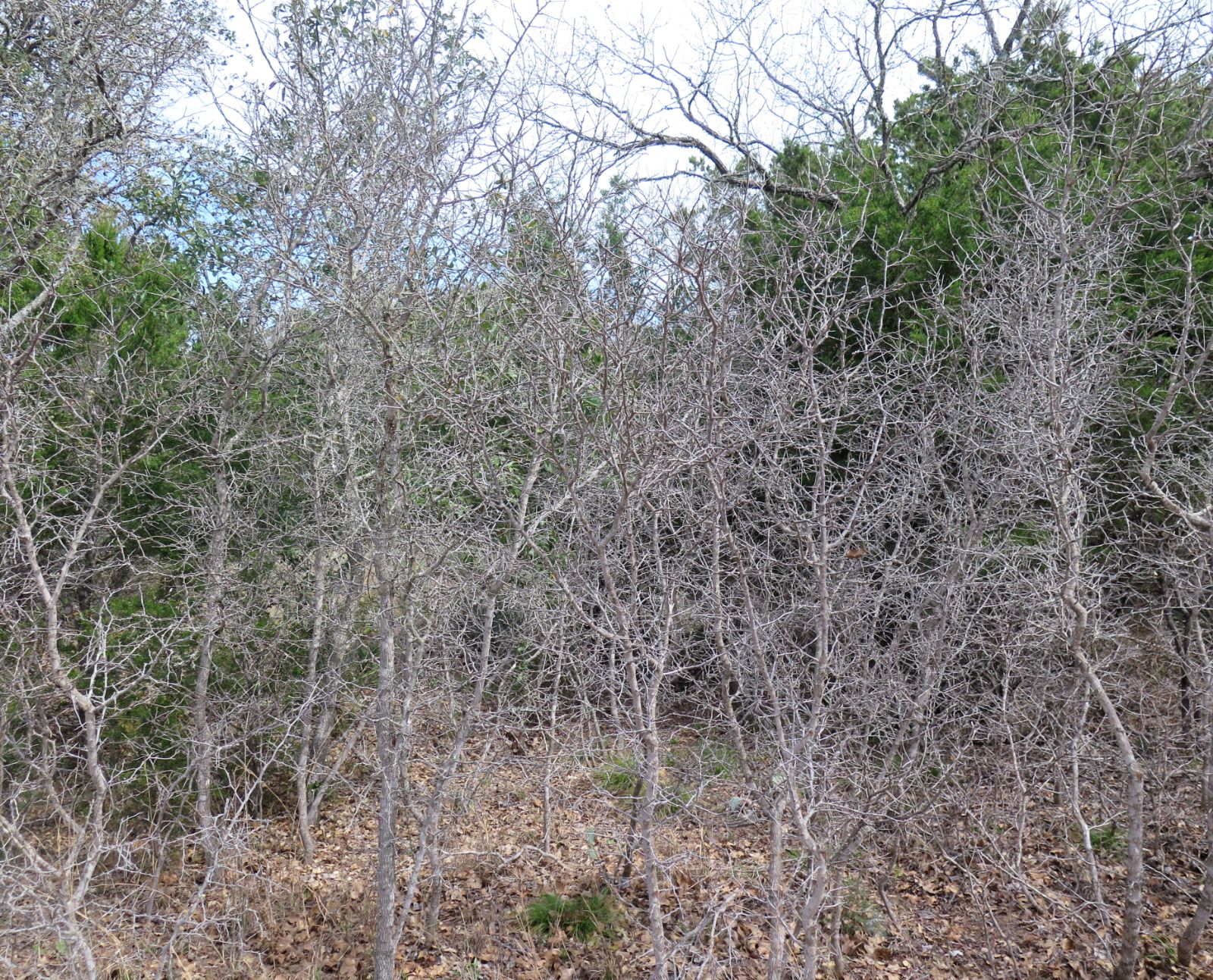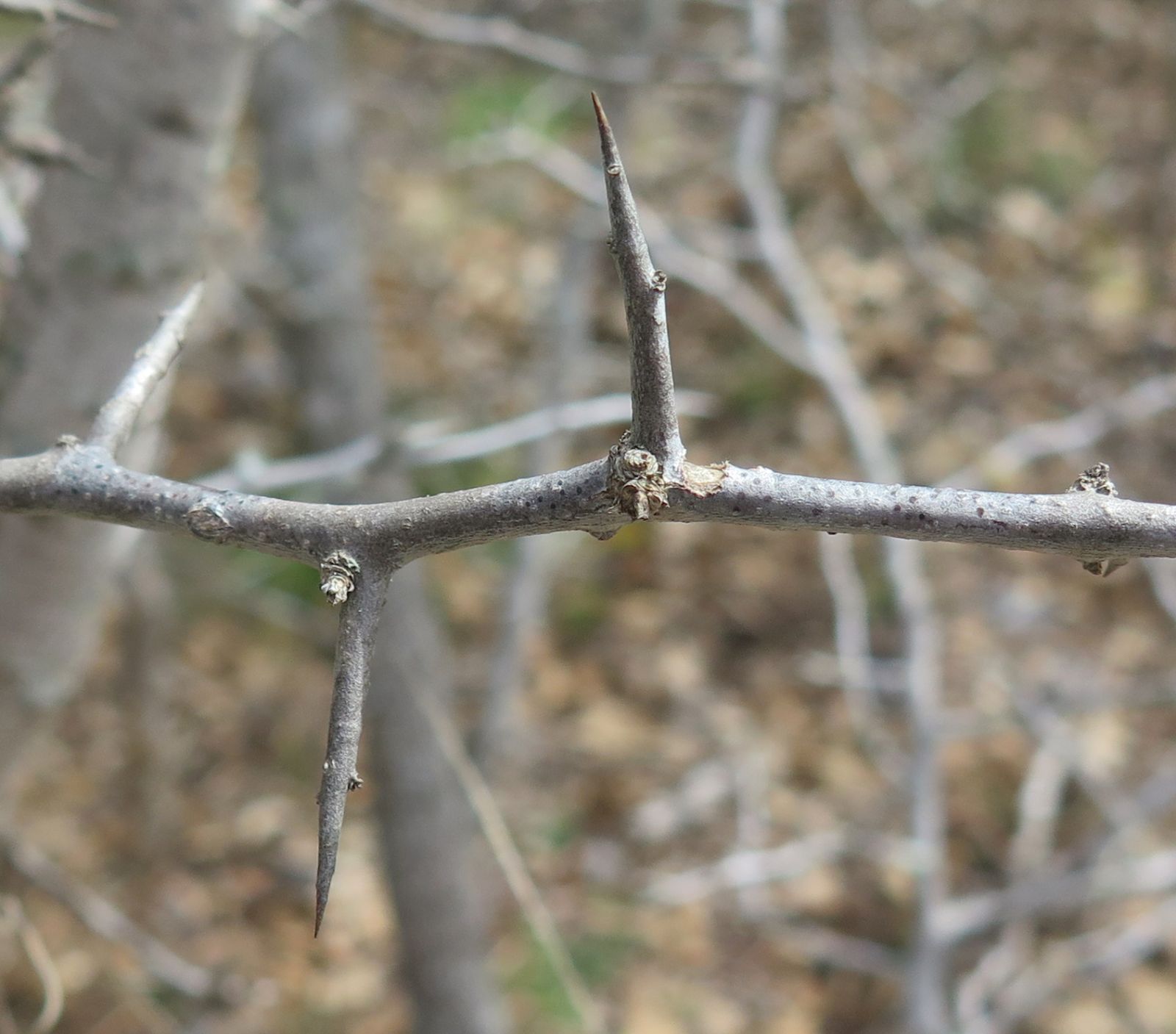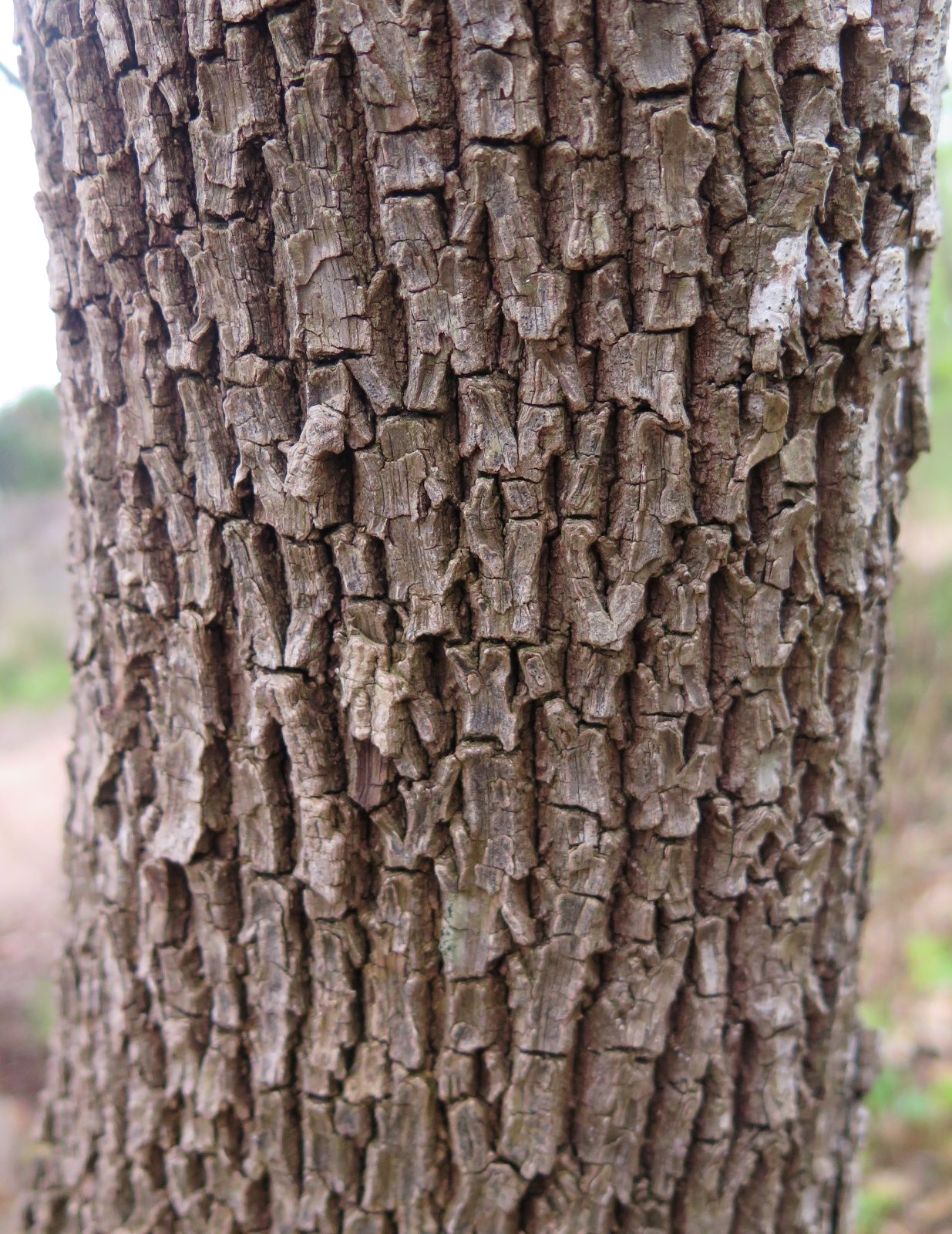Bumelia lycioides
Credits
Article from Bean's Trees and Shrubs Hardy in the British Isles
Recommended citation
'Bumelia lycioides' from the website Trees and Shrubs Online (treesandshrubsonline.
Other taxa in genus
A deciduous, small tree over 20 ft high in a wild state, but usually a shrub little more than half that height in cultivation; branchlets glabrous, and on young specimens usually armed with spines 3⁄4 in. or less long. Leaves firm and rather hard in texture, varying in shape from narrow oval to obovate (the former shape more characteristic of young plants), 1 to 5 in. long, 1⁄2 to 11⁄2 in. wide; always tapered to the base, pointed or rounded at the apex, not toothed, and quite glabrous except for a few silky hairs about the midrib beneath; conspicuously veined; stalk 1⁄6 to 1⁄3 in. long. Flowers 1⁄8 in. in diameter, produced in August and September, each on a glabrous stalk 1⁄2 in. or less long, crowded numerously in hemispherical clusters in the leaf-axils. Corolla white; calyx comparatively large, green. Fruit egg-shaped, 1⁄2 in. long, black, rarely or never seen in this country.
Native of the south-eastern United States, and known in England since 1752, but not ornamental enough to be generally cultivated. It is quite hardy at Kew, but appears to be the only one of the genus of which so much can be said. The leaves on young sterile plants resemble those of a peach in size and shape. Several other species have at times been introduced, but they need at least the warmth of the south-western counties to thrive. Amongst them B. tenax Willd., whose leaves are covered beneath with a tawny yellow, silky down; and B. lanuginosa (Michx.) Pers., with a more or less woolly down, are the most interesting. The latter is in cultivation in the Glasnevin Botanic Garden, but Dr Walsh tells us it has little to commend it as a garden plant.



